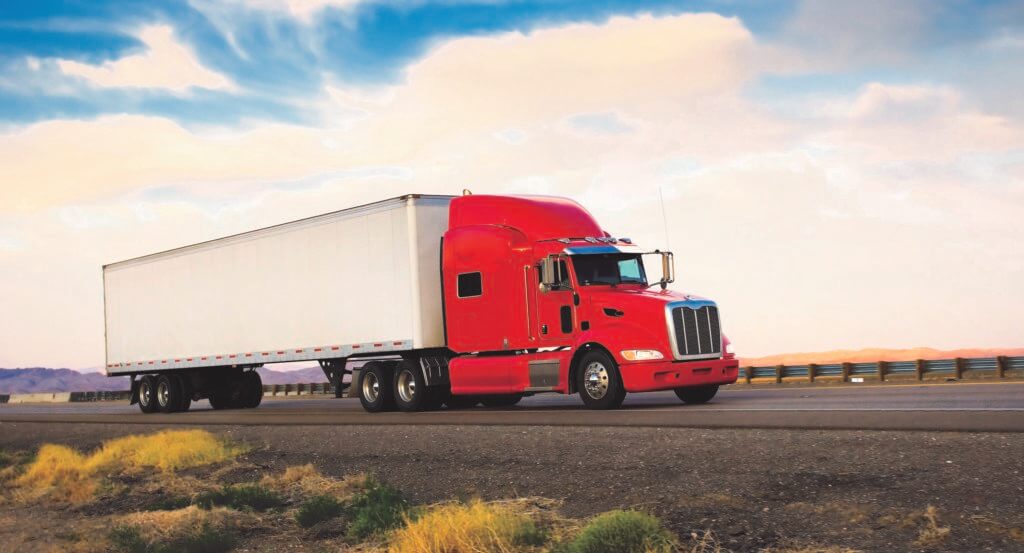
DOT Tire Regulations for Commercial Vehicles
September 29, 2022
Truck maintenance is extremely important, not only for the driver’s safety but also for the safety of all those that share the road with you. Tires are one of the many items on the daily checklist to go over and the main item of discussion today. The US Department of Transportation (DOT) and Federal Motor Carrier Safety Administration (FMSCA) maintain the rules and regulations for motor vehicles. As an operator of a commercial vehicle it is your responsibility to know DOT regulations. Within this article you will find the specific regulations for tires and wheels and a few other tips to stay within those guidelines.
DOT Tire Regulations
The following information regarding tires is pulled directly from section 393.75 of Title 49 Code of Federal Regulations:
(a) No motor vehicle shall be operated that-
- Has body ply or belt material exposed through the tread or sidewall,
- Has any tread or sidewall separation,
- Is flat or has an audible leak, or
- Has a cut to the extent that the ply or belt material is exposed.
(b) Any tire on the front wheels of a bus, truck, or truck tractor shall have a tread groove pattern depth of at least 4⁄32 of an inch when measured at any point on a major tread groove. The measurements shall not be made where tie bars, humps, or fillets are located.
(c) Tires shall have a tread groove pattern depth of at least 2⁄32 of an inch when measured in a major tread groove. The measurement shall not be made where tie bars, humps or fillets are located.
(d) No bus shall be operated with regrooved, recapped or retreaded tires on the front wheels.
(e) A regrooved tire with a load-carrying capacity equal to or greater than 2,232 kg (4,920 pounds) shall not be used on the front wheels of any truck or truck tractor.
(f) No motor vehicle may be operated with speed-restricted tires labeled with a maximum speed of 55 mph or less in accordance with S6.5(e) of FMVSS No. 119 at speeds that exceed the rated limit of the tire.
(g) Tire loading restrictions (except on manufactured homes). No motor vehicle shall be operated with tires that carry a weight greater than that marked on the sidewall of the tire or, in the absence of such a marking, a weight greater than that specified for the tires in any of the publications of any of the organizations listed in Federal Motor Vehicle Safety Standard No. 119 unless:
- The vehicle is being operated under the terms of a special permit issued by the State; and
- The vehicle is being operated at a reduced speed to compensate for the tire loading in excess of the manufacturer’s rated capacity for the tire. In no case shall the speed exceed 80 km/hr (50 mph).
(i) Tire Inflation Pressure
- No motor vehicle shall be operated on a tire which has a cold inflation pressure less than that specified for the load being carried.
- If the inflation pressure of the tire has been increased by heat because of the recent operation of the vehicle, the cold inflation pressure shall be estimated by subtracting the inflation buildup factor from the measured inflation pressure.
Key Points:
A key takeaway from this section is that all drive and trailer tires must be at 2/32 tread depth from the lowest point of tread on the tire. Your front or “steer” tires must be at 4/32 tread depth from the lowest point. Keeping a simple tread depth gauge (seen below) can keep you out of trouble and avoid costly fines. Keeping an eye on your tread depth should also keep you in line with other regulations like wires showing.

Most importantly, staying within these guidelines will keep you or your drivers in a safe position on the roads. As important as engine and other maintenance is, your tires are the last line of defense between you and the road. Being lazy and taking risk with your tires can put the driver’s life and everyone else on the road’s life in danger. 664 fatalities were attributed to tire-related crashes in 2020. Do your part to not be a part of the statistic.
Not only will proper tire maintenance keep you safe and out of trouble, it will also help avoid vehicle performance issues and help maximize profitability. Paying close attention to tire wear can help indicate other problems related to suspension and steering.
DOT Wheel Regulations
The following information regarding wheels is pulled directly from section 393.205 of Title 49 Code of Federal Regulations:
(a) Wheels and rims shall not be cracked or broken.
(b) Stud or bolt holes on the wheels shall not be elongated (out of round).
(c) Nuts or bolts shall not be missing or loose.
These rules are a bit more cut and dry but important nonetheless. Make sure that you, your service manager and your trusted tire shop stay on top of any issues with your wheels. As important as tires can be, they’re only as safe as the wheel they’re mounted on!
Take Off Tire specializes in wheels and tires for Commercial, OTR and Ag applications. We have dedicated employees to answer any questions you may have regarding tires and wheels of all sizes and applications. Call 402-413-6646 today for pricing and information!
